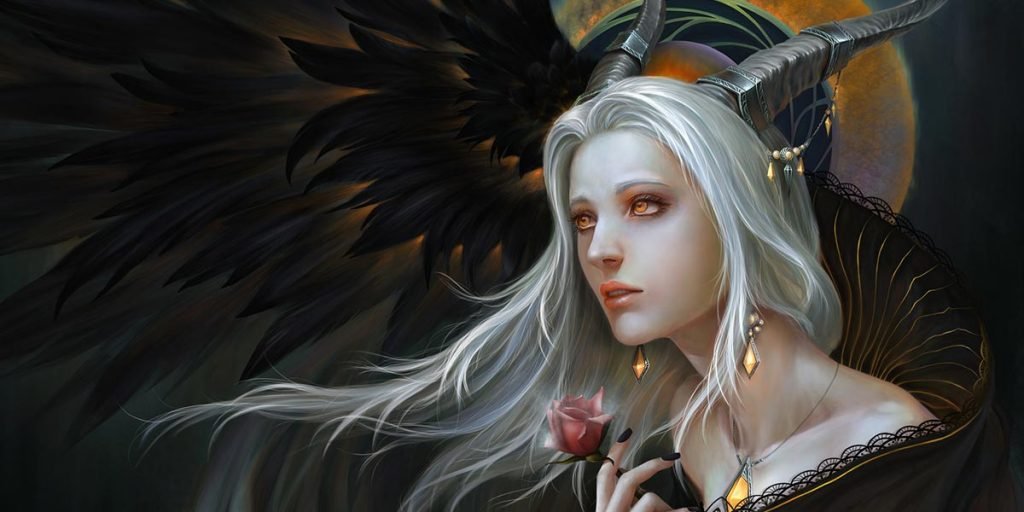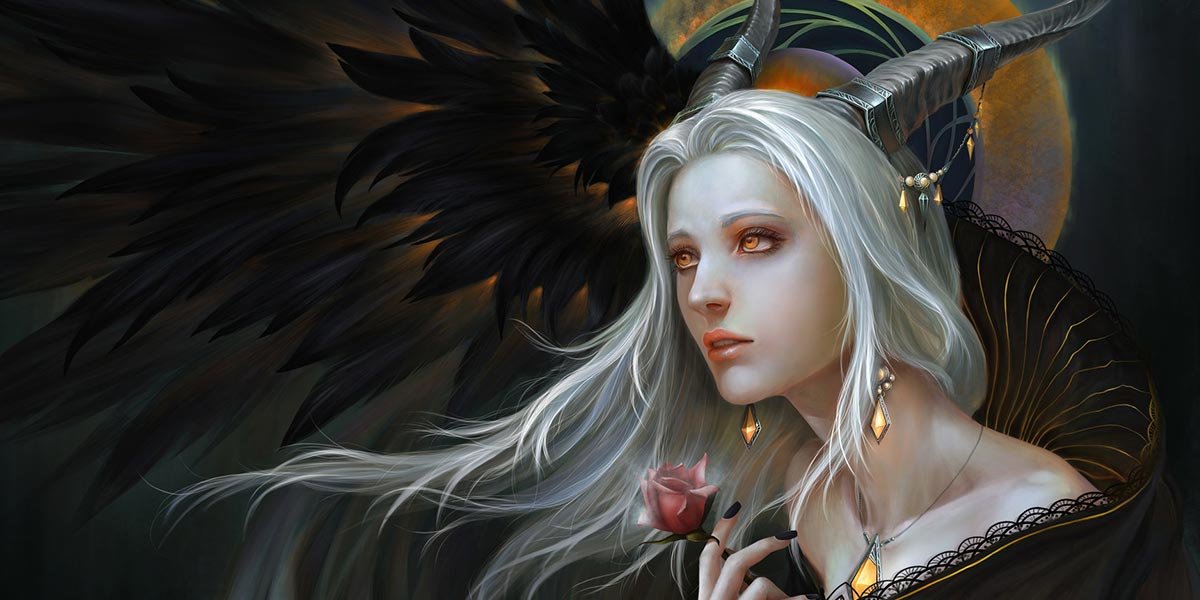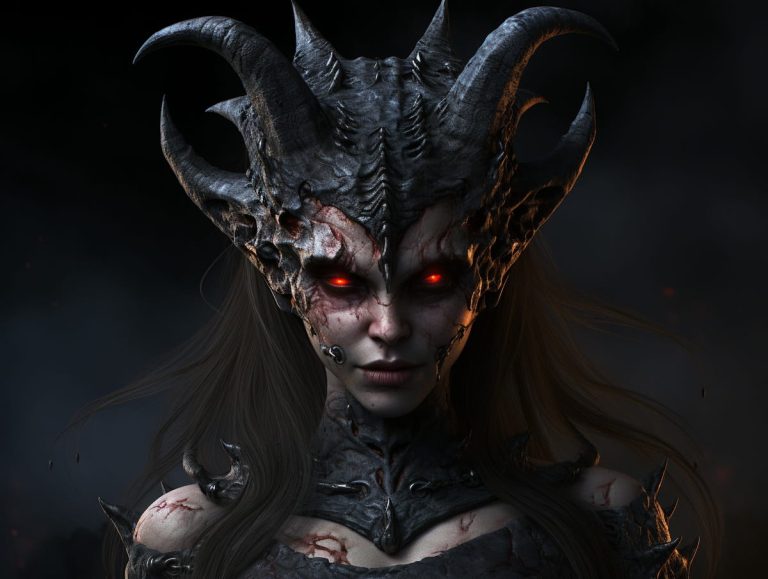Unveiling The Dark Mystique: Names For Female Demons
Step into the shadowy realm where myths and legends collide. Names for female demons have fascinated humanity for centuries, weaving a tapestry of fear and intrigue. From ancient texts to modern-day lore, these dark entities hold a power that transcends time. They're not just characters in stories; they're symbols of the unknown, the mysterious, and the terrifying. So, buckle up, because we're diving deep into the world of female demons and their captivating names.
Ever wondered what makes a name demonic? It's not just about sounding spooky or dark. The names for female demons carry weight, history, and sometimes even a curse. They're chosen carefully, often reflecting the demon's nature, origin, or even her role in the grand scheme of chaos. In this article, we'll explore the origins, meanings, and significance of these names, shedding light on the shadowy corners of the supernatural world.
This isn't just about names. It's about understanding the forces that shape our fears and fascinations. By the end of this journey, you'll have a deeper appreciation for the complexity and depth of female demons and their monikers. Let's get started, shall we?
Read also:Isabel Gravitt Height The Rising Stars Untold Story
Understanding the Essence of Female Demons
Before we dive into the names, let's take a moment to understand what makes female demons unique. Unlike their male counterparts, female demons often embody traits like seduction, manipulation, and cunning. They're the tricksters, the temptresses, and sometimes, the destroyers. Their power lies not just in brute force but in their ability to influence and control.
Throughout history, cultures around the world have depicted female demons in various forms. Some are terrifying creatures with monstrous appearances, while others are beautiful beings who lure their victims with charm and grace. This duality adds to their mystique, making them both feared and revered.
Historical Roots: Where It All Began
The origins of female demon names can be traced back to ancient civilizations. The Sumerians, Egyptians, and Greeks all had their versions of these dark entities. Each culture contributed its own flavor to the mythos, creating a rich tapestry of names and stories.
For instance, the Sumerians spoke of Lamashtu, a demoness known for her malevolent acts against pregnant women and infants. Meanwhile, the Greeks had Lamia, a creature with a hunger for children and a penchant for seduction. These stories laid the foundation for the demon names we know today.
Mythology and Female Demons
Mythology plays a crucial role in shaping our understanding of female demons. From the Bible's Lilith to the Hindu mythology's Kali, these figures have left an indelible mark on cultural narratives. They often represent chaos, rebellion, and the untamed aspects of the feminine spirit.
These mythological figures aren't just names on a page. They're symbols of the struggles and fears that humanity has faced throughout history. By studying their stories, we gain insight into the psyche of ancient peoples and the ways they made sense of the world around them.
Read also:Discover The Fascinating World Of Rema Ethnicity A Deep Dive Into Culture History And Identity
Popular Names for Female Demons
Now, let's get to the juicy part. Here's a list of some popular names for female demons, each with its own unique story and significance:
- Lilith - The first wife of Adam in some interpretations, known for her independence and rebellion.
- Mara - A figure from Buddhist mythology associated with fear, distraction, and temptation.
- Babylonian Lamashtu - A demoness who preys on infants and pregnant women.
- Momiji - A Japanese demoness known for her beauty and ability to transform into a fox.
- Banshee - An Irish spirit whose wail signifies impending death.
Each name carries its own weight and history, contributing to the rich tapestry of demon lore.
Breaking Down the Symbolism
What do these names mean? They often reflect the demon's attributes or the fears they embody. For example, Lilith represents rebellion and independence, while Banshee symbolizes death and mourning. Understanding the symbolism behind these names adds depth to their stories and helps us connect with the myths on a more profound level.
Cultural Variations in Demon Names
Names for female demons vary widely across cultures, each reflecting the unique fears and beliefs of its people. In some cultures, demons are seen as purely evil entities, while in others, they're more complex figures with both positive and negative traits.
For instance, in Japanese mythology, demons or yokai can be both benevolent and malevolent. This complexity adds layers to their stories, making them more relatable and human-like. By exploring these cultural variations, we gain a broader understanding of the demon archetype and its significance in different societies.
Regional Differences
Regional differences play a significant role in shaping demon names and stories. In the Middle East, demons like the Jinn are prominent figures, often appearing in tales of magic and transformation. In contrast, European folklore is filled with creatures like the Succubus, known for her seductive powers and nocturnal visits.
These regional differences highlight the diversity of human experience and the ways in which different cultures interpret the supernatural.
The Power of Naming: Why It Matters
Naming is a powerful act. It gives identity and meaning to something, shaping how we perceive and interact with it. In the case of female demons, names carry a weight that goes beyond simple identification. They encapsulate the essence of these creatures, reflecting their power, nature, and role in the supernatural world.
When we name a demon, we give it form and substance, turning it from an abstract concept into a tangible entity. This act of naming is both an acknowledgment and a form of control, allowing us to confront and understand the forces that terrify us.
The Impact on Modern Culture
The influence of demon names extends into modern culture, appearing in books, movies, and video games. These names often evoke a sense of mystery and danger, drawing audiences into the dark worlds they represent. By using these names, creators tap into a rich vein of mythology and folklore, adding depth and authenticity to their stories.
Contemporary Interpretations
In today's world, female demons continue to captivate our imagination. Modern interpretations often blend traditional elements with contemporary themes, creating new and exciting stories. These tales reflect the fears and anxieties of our time, offering a fresh perspective on the timeless archetype of the female demon.
From horror films to fantasy novels, the figure of the female demon remains a powerful presence in popular culture. She's a reminder of the unknown, the mysterious, and the forces that lie beyond our understanding.
Modern Media and Demon Lore
Modern media has played a significant role in shaping our perception of female demons. Shows like "Supernatural" and "The Witcher" have brought these creatures to life, introducing them to new audiences and breathing fresh life into old myths. Through these portrayals, we see the evolution of demon lore and its continued relevance in today's world.
Conclusion: The Eternal Fascination
In conclusion, names for female demons are more than just words. They're gateways to a world of myth, mystery, and intrigue. By exploring these names, we gain insight into the human psyche and the ways we make sense of the supernatural. Whether you're a fan of horror or simply curious about the unknown, the world of female demons offers endless fascination.
So, the next time you hear a name like Lilith or Banshee, take a moment to appreciate the depth and history behind it. These names are more than just labels; they're stories waiting to be told. Share your thoughts and favorite demon names in the comments below, and don't forget to check out our other articles for more insights into the supernatural world.
Table of Contents
- Understanding the Essence of Female Demons
- Historical Roots: Where It All Began
- Popular Names for Female Demons
- Cultural Variations in Demon Names
- The Power of Naming: Why It Matters
- Contemporary Interpretations
- Conclusion: The Eternal Fascination


